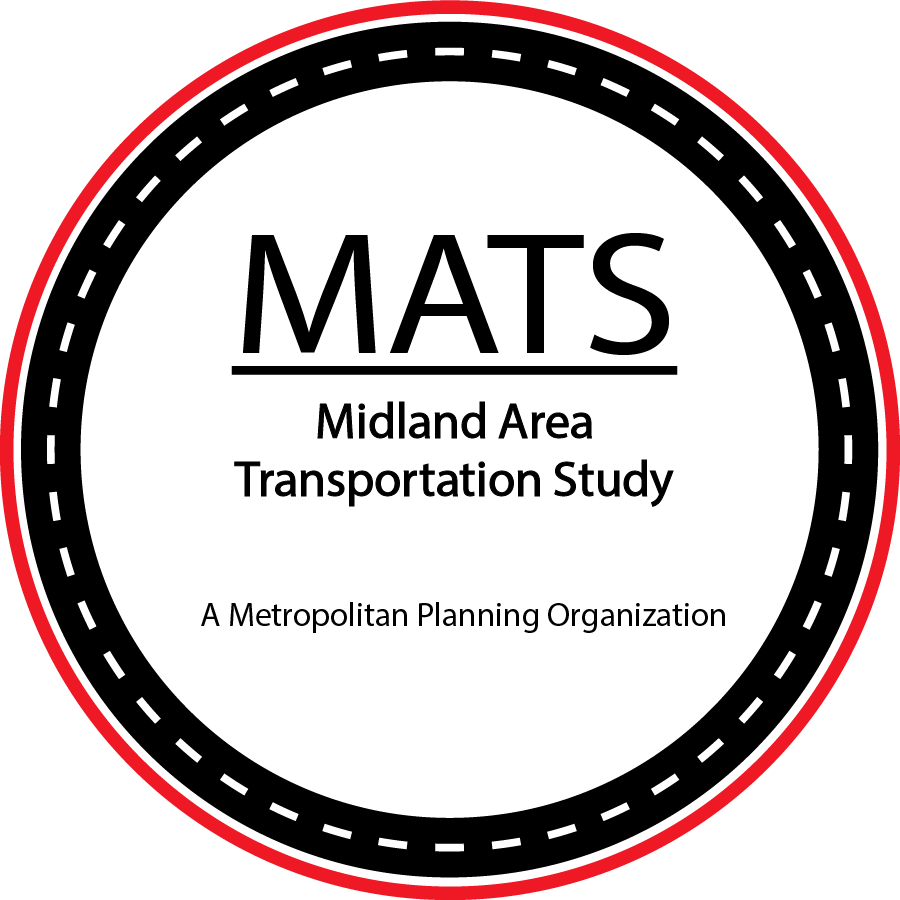MATS’ Long Range Transportation Plan - Towards 2045
The 2045 Long Range Transportation Plan serves as a decision-making guide for the Midland MPO, stakeholders, funding agencies, and other transportation partners. The plan helps pinpoint and address the future transportation related needs of our region by identifying issues and deficiencies within the system and recommends strategies to mitigate those issues.
The Long Range Transportation Plan prioritizes funding allocations; directs the transportation improvement program; and focuses on the relationship between the transportation network and regional land uses. The plan is projected over a horizon of at least a 20-years and is updated every 5 years in accordance with changing needs and new transportation related legislation.
-
The process for the creation of this plan involved many aspects, beginning with the vision, goals, objectives. Next, the area’s background and history, land use, and demographics were all analyzed relative to the transportation system. Previous reports were reviewed related to non-motorized transportation, air travel, freight and traffic safety. Data was gathered regarding the current and past condition of our streets and roads, traffic volumes and patterns. Then, travel demand modeling was performed analyzing the effect of expected growth and pinpointing areas of traffic deficiencies.
Based on the findings from these aspects the overall long range strategy was developed focusing on critical local factors. Finally, the implementation plan, i.e. the prioritized project list, was carefully prepared.
A thorough financial resource analysis was conducted, comparing expected revenues to project costs. This is a requirement to ensure a fiscally constrained plan. Environmental mitigation analysis and environmental justice analysis were conducted, as required.
Finally, MATS has aimed to ensure a broad and inclusive level of public input for this plan. Open houses, public notice of meetings, surveys, and advertising were all utilized in this process. The input gleaned from all of these interactions has been instrumental in the development of Towards 2045, and will be central to the activities of MATS going forward as well.
-
This process supported the synergistic approach developed early in the visioning phase for the LRP, and the analysis of the data gathered subsequently. The resulting four integrated core strategies of the Plan were: Preservation, Maintenance, Safety, and Livability.
The goals and objectives of the Plan therefore truly promote an integrated multi-modal transportation system focused on addressing the needs of all users.
The travel demand model forecasted only occasional congestion issues, with few segments showing daily capacity deficiency and even fewer showing current or projected peak period capacity deficiency. This largely validates the focus on maintenance and reconstruction and led to the development of the prioritized project list, which strives to address the goals of the plan by utilizing the four core strategies. The prioritized projects in this plan thus address the primary issue of aging infrastructure, and have an identified source of funding, thereby ensuring a fiscally constrained plan.
The conclusions reached clearly indicated that the existing network was not urgently in need of expansion; that operations (traffic flows), were overall very good; and that demographic forecasts predicted low but steady growth.
-
The Plan identifies the investments that we will need to make in our transportation system. Due to the expansiveness and the age of our transportation system, the emphasis is toward projects that rebuild and preserve our existing system.
The prioritized 2022-2045 transportation projects are located throughout the MATS planning area. Thus the environmental review showed that no environmental resources or population groups are disproportionately neglected or overexposed in relation to these projects. The needs of the minority and low-income population are being taken into consideration with respect to future transportation improvements.
In light of Federal requirements, performance measures were introduced that, over time, will be fully integrated into the MATS planning process. This further reflects the fact that plans are more effective if their outcomes can be measured, and therefore projects can be more effectively programmed.
Lastly, the plan presents a large number future transportation projects which fall outside of estimated reasonably expected transportation revenues, but which are still needed to maintain the transportation infrastructure at adequate levels. This strongly indicates that needs will continue to exceed resources in the near term at least.
Achieving the goals laid out in the pages of Towards 2045 will require a concerted, coordinated effort on behalf of elected officials, local agencies, and the public. The result will be a more sustainable, equitable, and innovative region that is ready to compete and prosper on the national and global stage.

